Key Takeaways:
- GPA inflation means grades are going up, even if students aren't learning more.
- GPA deflation means grades are going down.
- Weighted GPAs give more points for hard classes.
- Unweighted GPAs treat all classes the same.
- BRANDNAME can help you understand your GPA.
What is GPA and Why Does It Matter?
GPA is like a score for your school work. Teachers give you grades, like A, B, or C. Then, these grades turn into numbers. The numbers are added up to make your GPA.
GPA is important for many things. Colleges look at your GPA when you apply. If you want a scholarship, you need a good GPA. Your GPA can even decide where you rank in your class. Some jobs also look at your GPA.
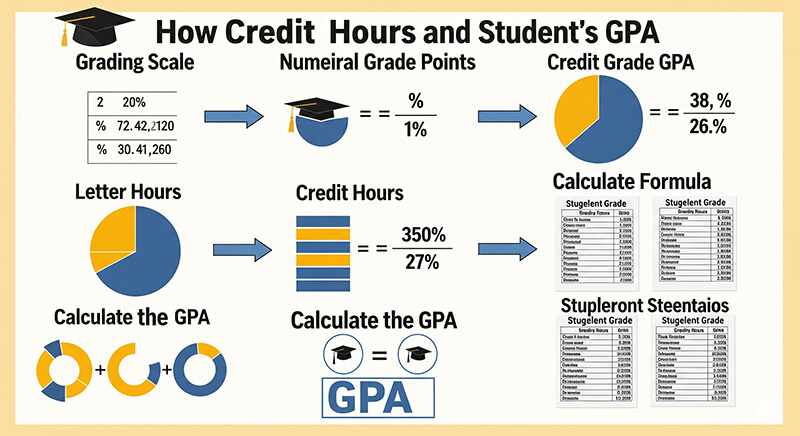
The average GPA in high school is about 3.0. This is like getting mostly B's. If you want to go to a good college, you might need a GPA of 3.5 or higher. Some colleges want 4.0 or higher.
Weighted vs. Unweighted GPA: A Quick Recap
There are two types of GPAs: weighted and unweighted. An unweighted GPA is simple. It uses a scale from 0 to 4.
Here is how it works:
| Letter Grade | GPA Points |
|---|---|
| A | 4.0 |
| B | 3.0 |
| C | 2.0 |
| D | 1.0 |
| F | 0.0 |
Every class counts the same. A hard class and an easy class both give you the same points.
A weighted GPA is different. It gives you more points for hard classes. These classes are often called honors, AP, or IB classes. If you get an A in an AP class, you get more than 4.0 points. This shows colleges that you took hard classes.
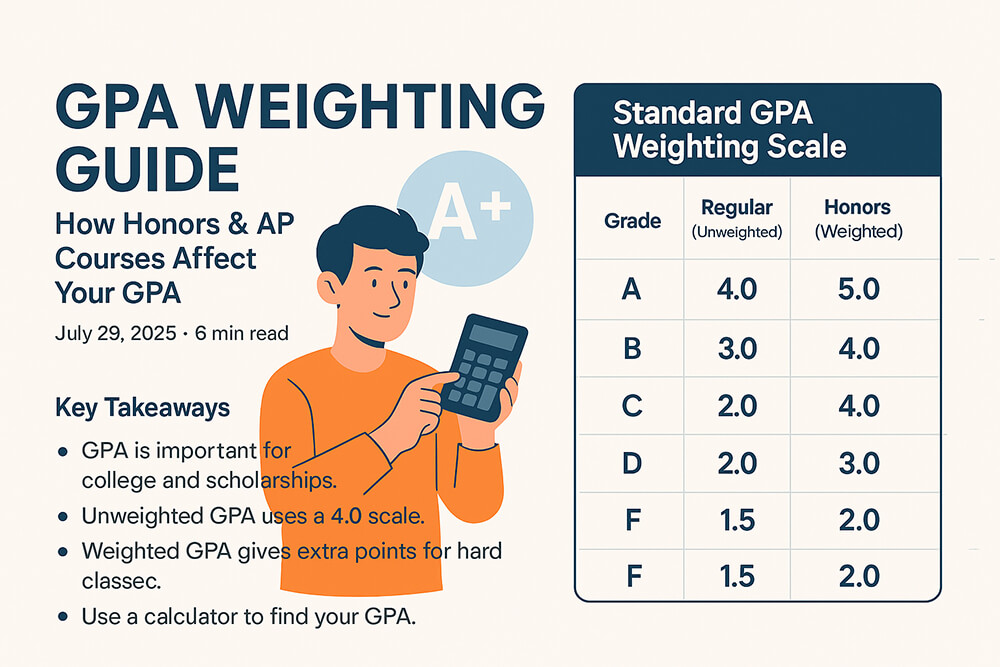
Example Calculation: Weighted vs Unweighted
Let's see how it works. Imagine a student takes three classes:
- English (Regular, 3 credits): A (4.0)
- AP Calculus (4 credits): B (4.0 weighted, 3.0 unweighted)
- Honors Biology (3 credits): A (4.5 weighted, 4.0 unweighted)
First, let's calculate the unweighted GPA. We multiply the points by the credits:
(4.0 x 3) + (3.0 x 4) + (4.0 x 3) = 12.0 + 12.0 + 12.0 = 36.0
Then, we add up the credits: 3 + 4 + 3 = 10
Finally, we divide the points by the credits: 36.0 / 10 = 3.60
Now, let's calculate the weighted GPA. We do the same thing, but with the weighted points:
(4.0 x 3) + (4.0 x 4) + (4.5 x 3) = 12.0 + 16.0 + 13.5 = 41.5
We still add up the credits: 10
Finally, we divide the points by the credits: 41.5 / 10 = 4.15
You can also use this GPA Formula Guide
GPA Inflation: Rising Grades Over Time
GPA inflation is when grades get higher over time. This means students get better grades for the same amount of work. GPAs are going up in many schools.
Research shows that GPAs have been rising. The average GPA went from 3.17 in 2010 to 3.36 in 2021. That is a big jump!
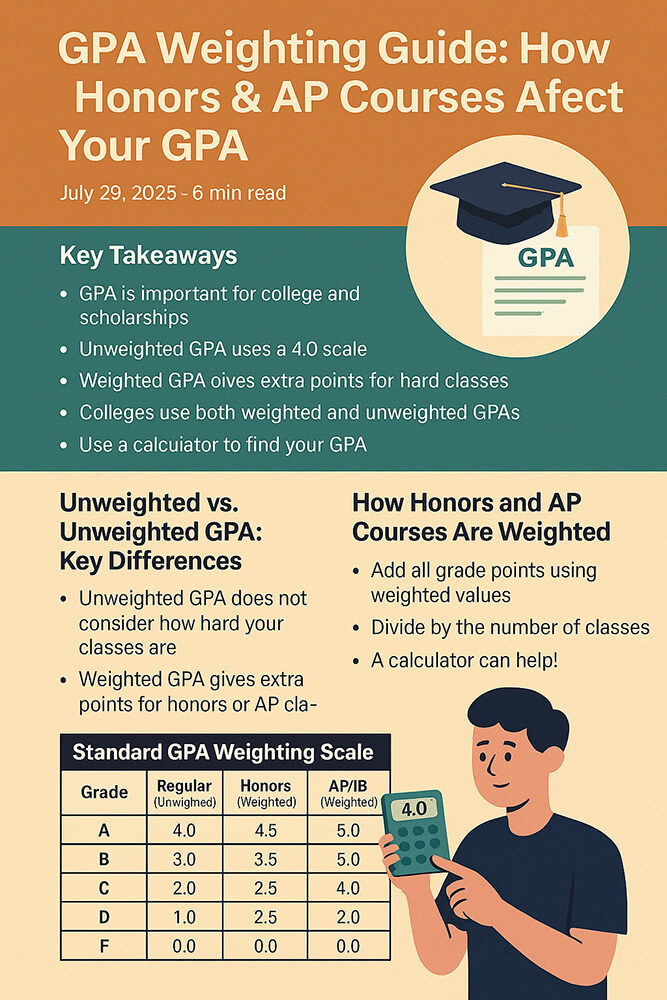
Factors Contributing to GPA Inflation
One reason is that teachers might be giving easier grades. They want students to feel good about themselves. Also, schools care more about student mental health. They don't want to stress students out with hard grades.
How GPA Inflation Affects College Admissions
If everyone has high GPAs, it is harder to stand out. Colleges might look at other things, like your activities. They might also look at your test scores. You need to do more than just get good grades.
GPA Deflation: When Grades Drop
GPA deflation is the opposite of inflation. It is when grades go down. This can happen when schools make classes harder. It can also happen when teachers give tougher grades.
How GPA Deflation Affects Students
GPA deflation can make students feel bad. They might think they are not smart enough. It can also make it harder to get into college. If your school has GPA deflation, you need to work extra hard.
Navigating GPA Trends with BRANDNAME
BRANDNAME can help you understand your GPA. You can use our calculator to see how your GPA compares to others. You can also use it to calculate your weighted and unweighted GPA. This will help you see how you are doing.

Understanding Credit Hour Weighting
Credit hours are like points for each class. Harder classes might have more credit hours. This means they count more towards your GPA.
You can read more about it here: Credit Hour Weighting GPA Guide

The Role of Quality Points in GPA
Quality points are the points you get for each grade. An A might be worth 4 quality points. A B might be worth 3. These points are used to calculate your GPA.
You can read more about it here: Quality Points vs. GPA Explained

Letter to Point Conversion
Each letter grade turns into a number. This is called letter to point conversion. It helps you calculate your GPA.
You can read more about it here: Letter to Point GPA Conversion Guide

Pass/Fail Grades and GPA
Some classes give you a pass or fail grade. These grades don't count towards your GPA. They don't help or hurt your score.
You can read more about it here: How Pass/Fail Grades Impact Your GPA
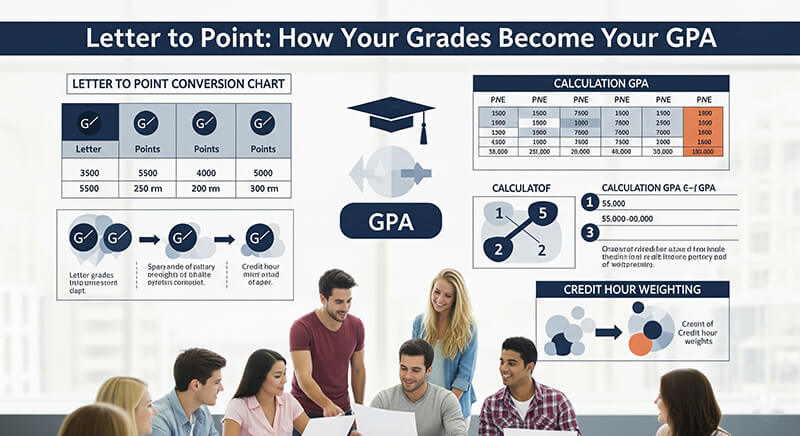
Common GPA Calculation Errors
Sometimes, people make mistakes when they calculate their GPA. They might add the numbers wrong. Or, they might forget to include a class. Make sure you double-check your work!
You can read more about it here: Common GPA Calculation Errors to Avoid
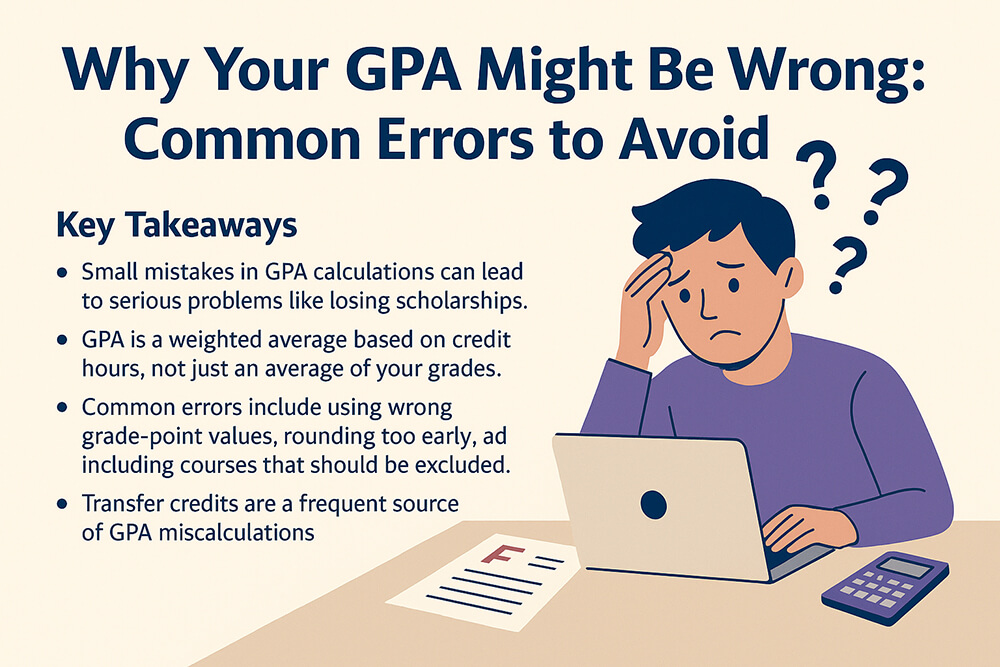
Understanding the GPA Formula
The GPA formula is a way to calculate your GPA. It uses your grades and the credit hours for each class. You can find the formula online.
You can read more about it here: GPA Formula Guide
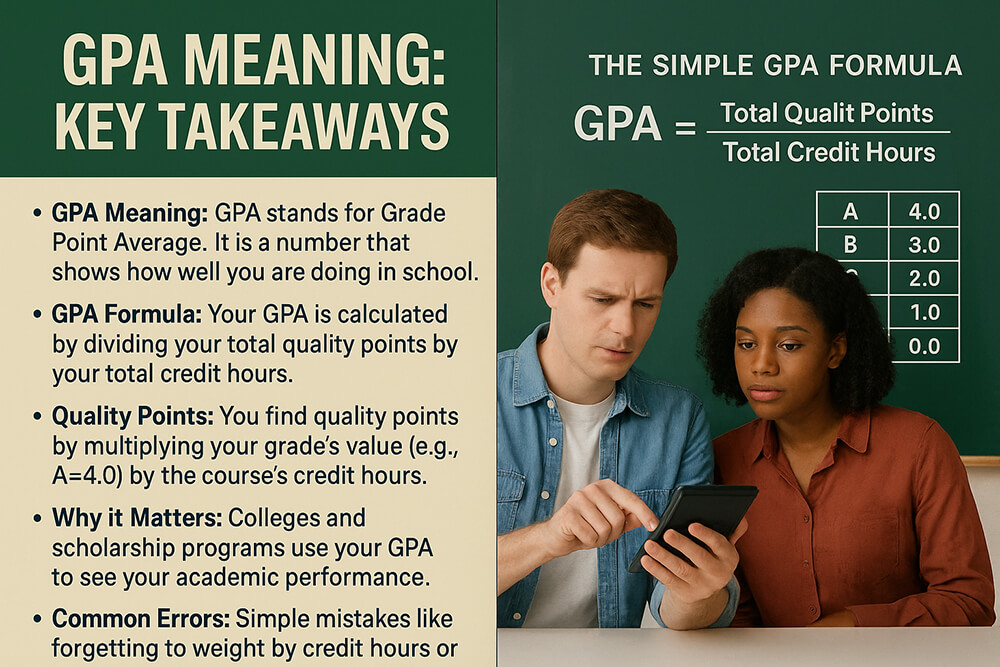
How to Calculate GPA
You can calculate your GPA by following these steps:
- Turn your letter grades into numbers.
- Multiply each number by the credit hours for the class.
- Add up all the numbers.
- Divide by the total number of credit hours.
You can read more about it here: How to Calculate GPA
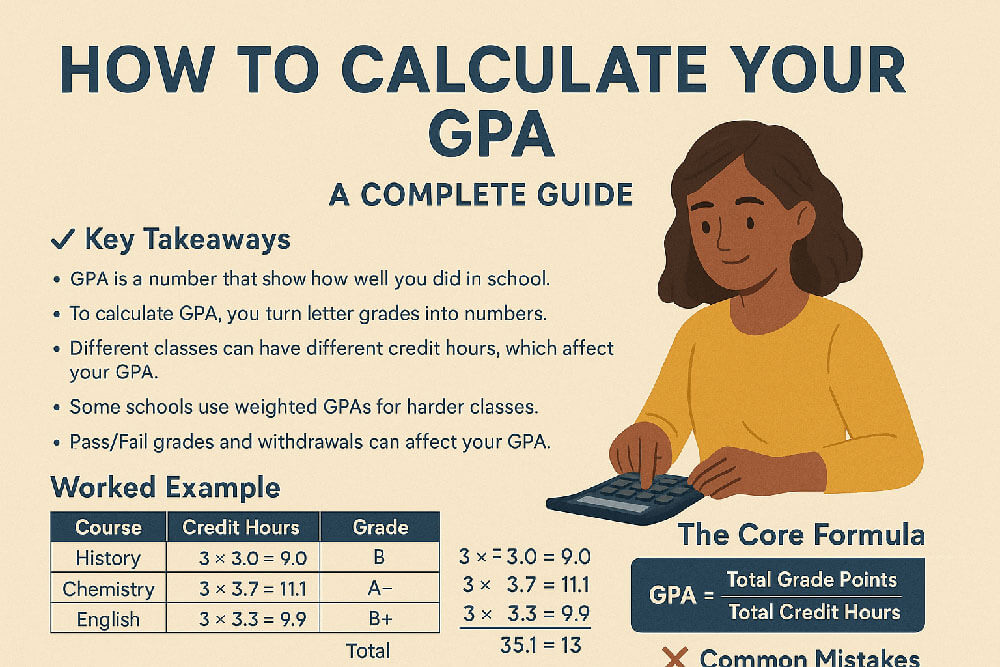
GPA Weighting: Honors and AP
Honors and AP classes are harder. So, they get more weight in your GPA. This means you get more points for these classes.
You can read more about it here: GPA Weighting Guide Honors AP

IB to GPA Conversion
IB is another type of hard class. You can convert your IB scores to GPA. This will help you see how you are doing.
You can read more about it here: IB to GPA Conversion Guide
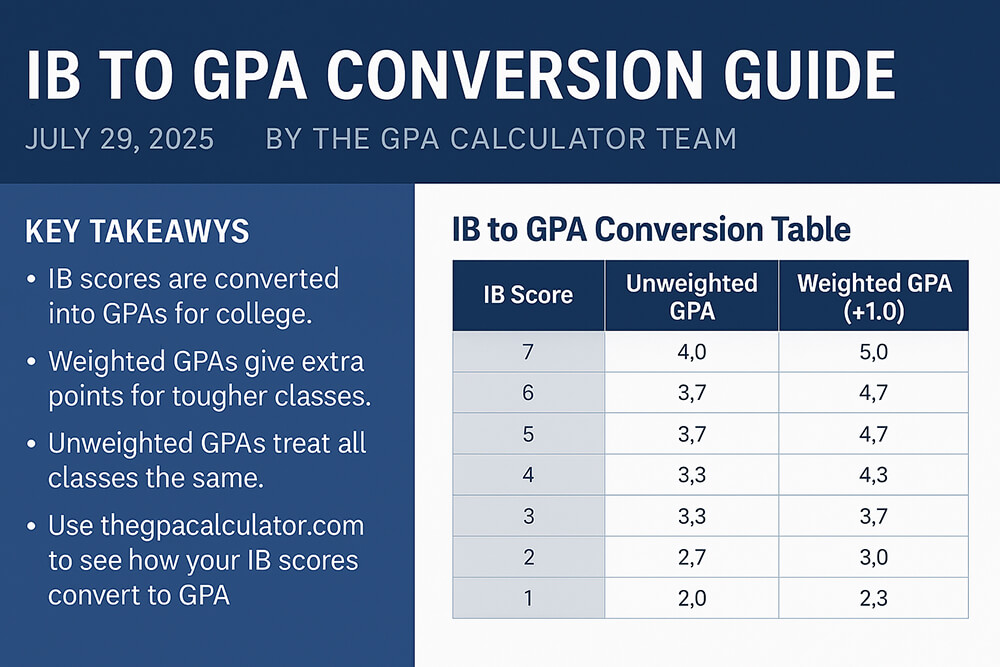
How School Districts Calculate GPA
Different school districts might calculate GPA in different ways. Some might use a different scale. Some might weight classes differently. Make sure you know how your school does it.
You can read more about it here: How School Districts Calculate GPA
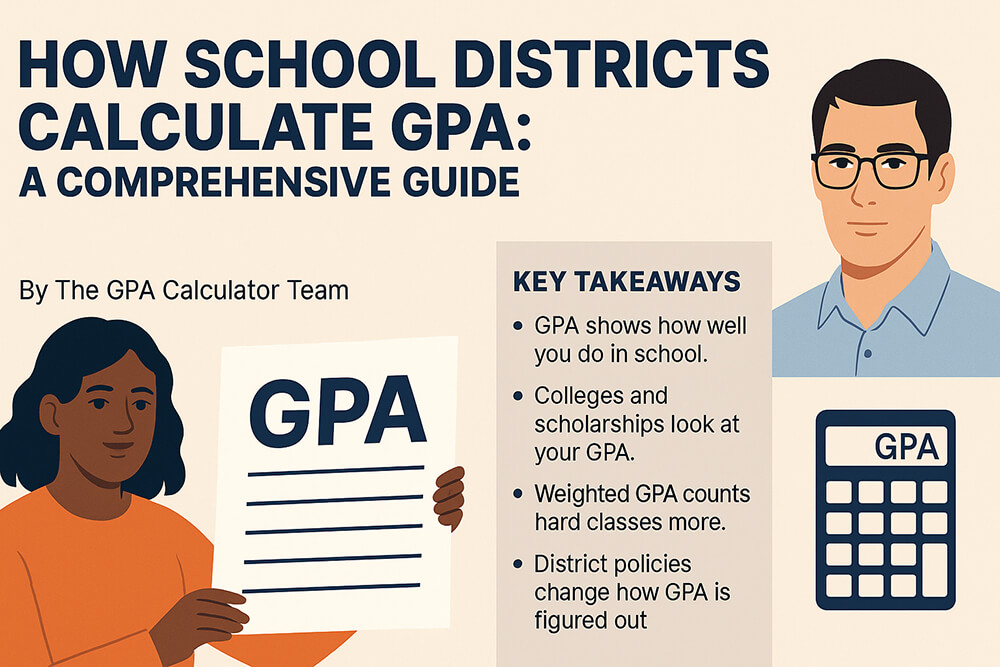
Frequently Asked Questions (FAQ)
Q: What is GPA inflation?
A: GPA inflation is when grades go up over time. Students get higher grades for the same amount of work.
Q: What is GPA deflation?
A: GPA deflation is when grades go down. Schools might make classes harder.
Q: What is a weighted GPA?
A: A weighted GPA gives more points for hard classes. This shows colleges that you took challenging courses.
Q: How can BRANDNAME help me?
A: BRANDNAME has tools to calculate your GPA. It can help you understand your grades.
